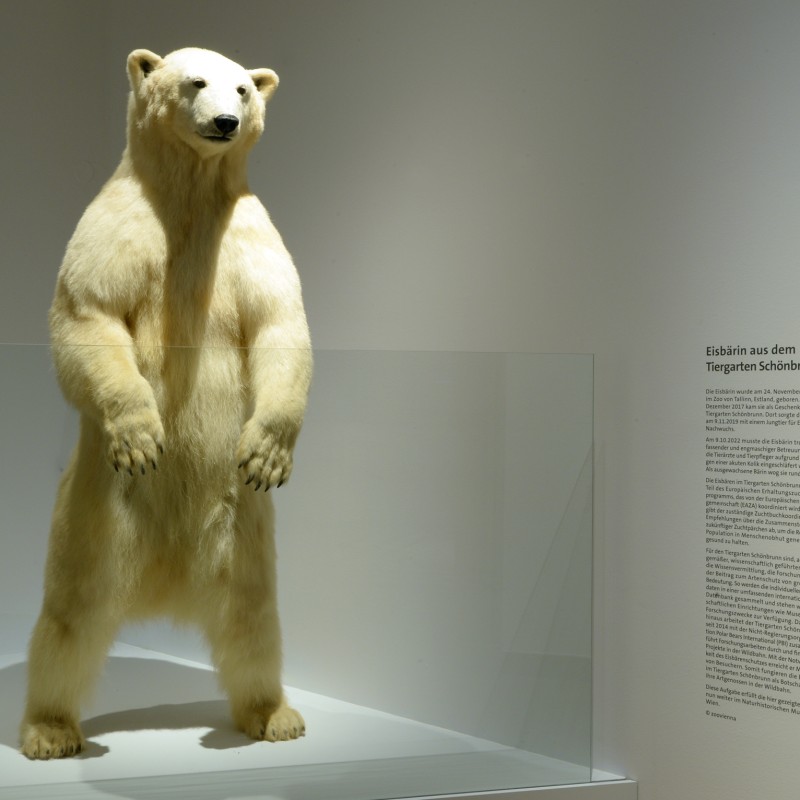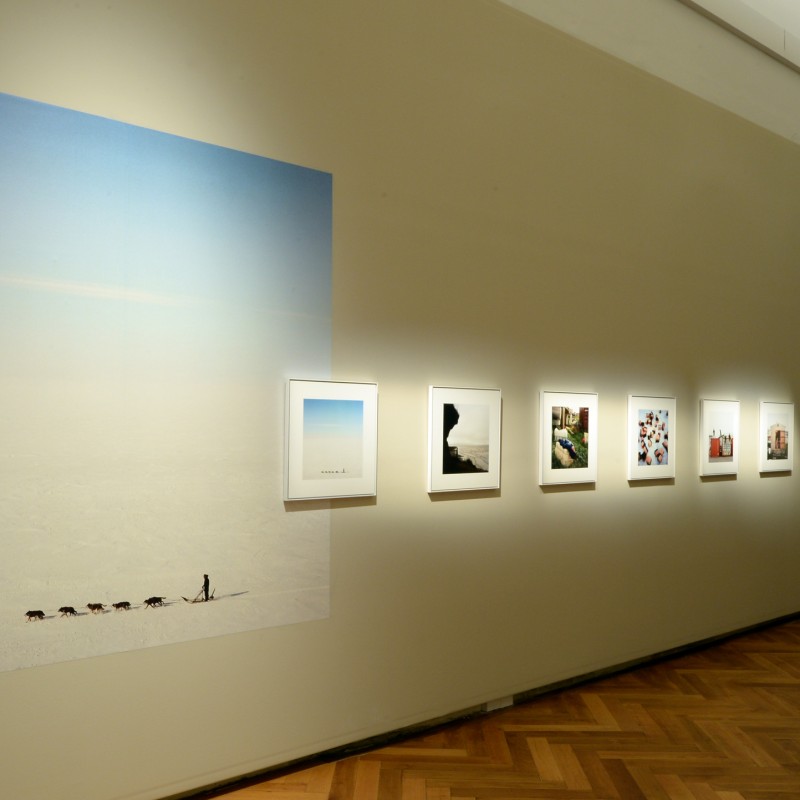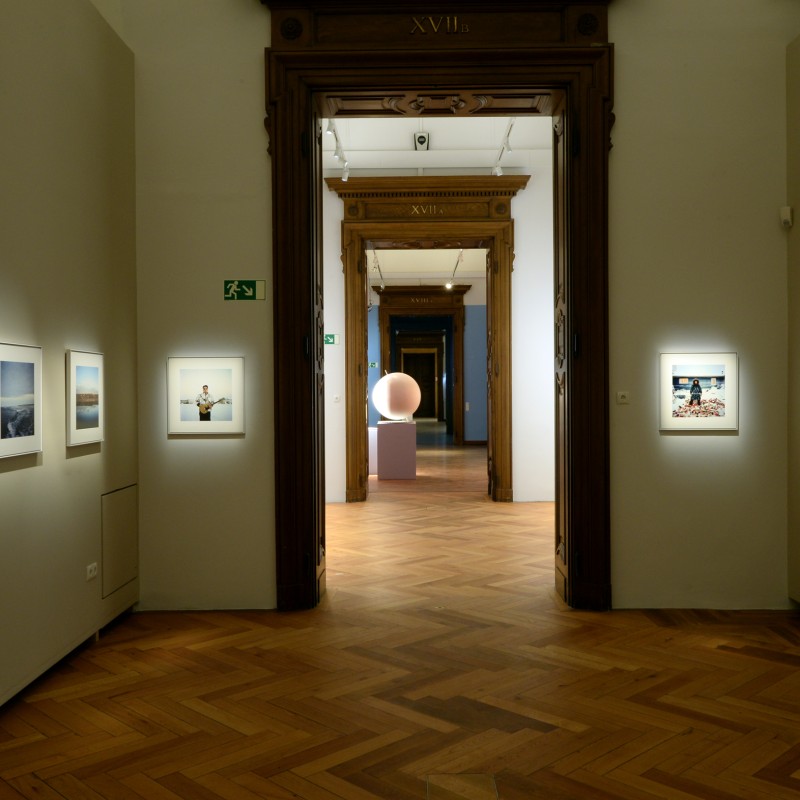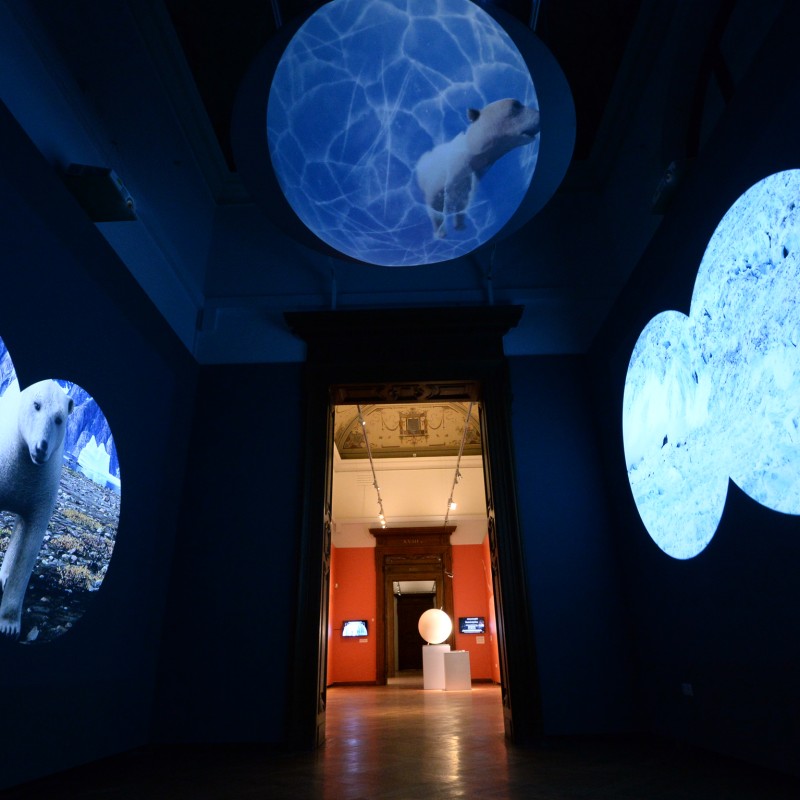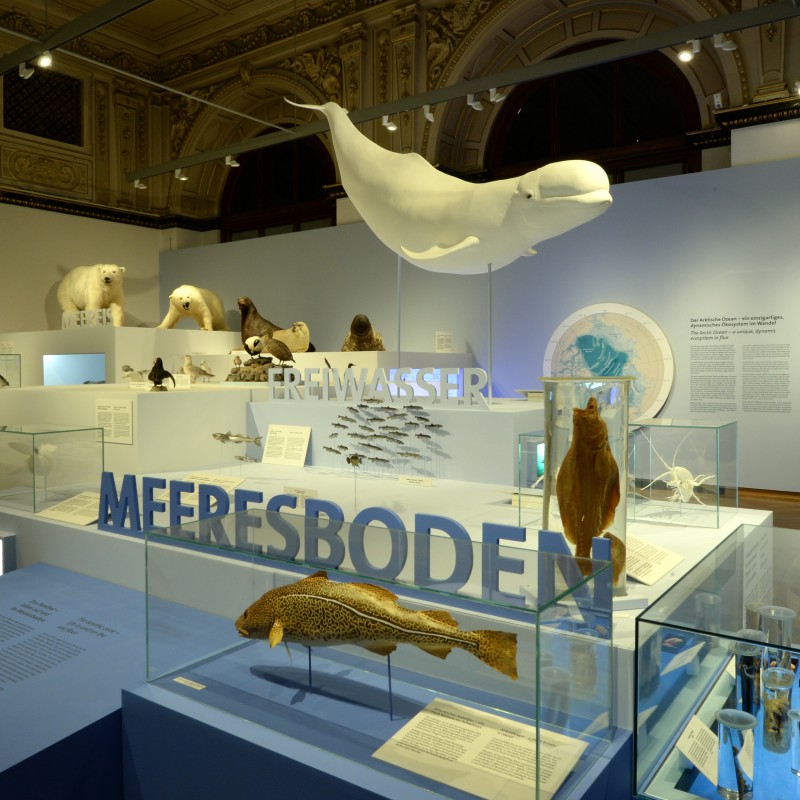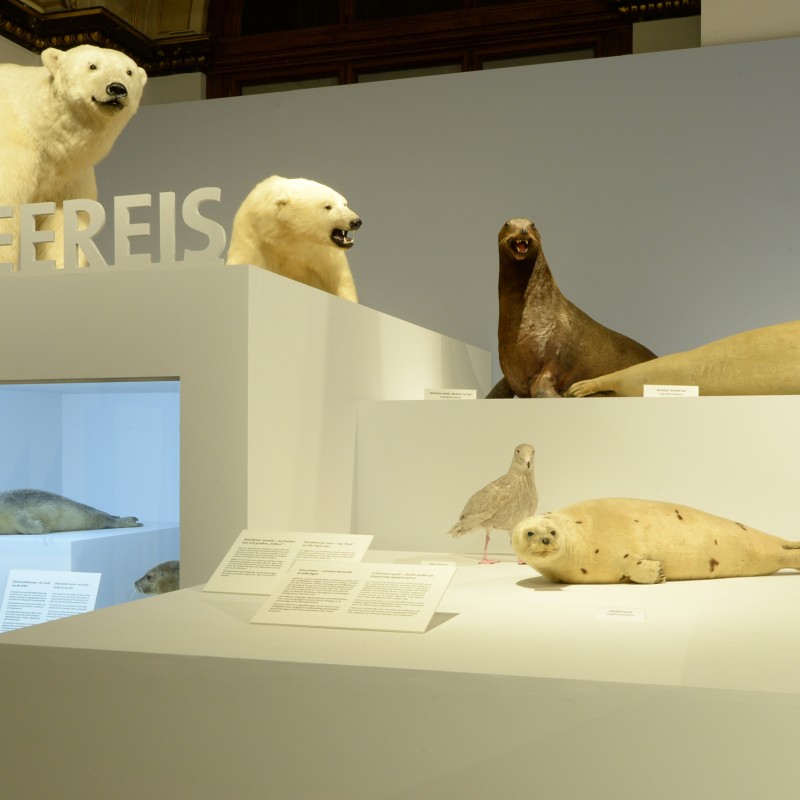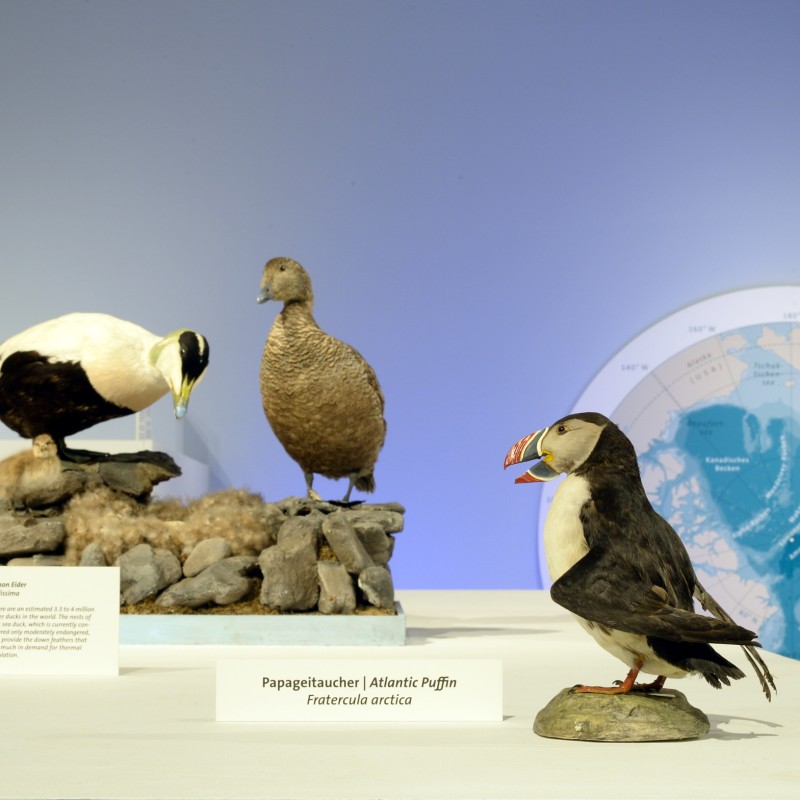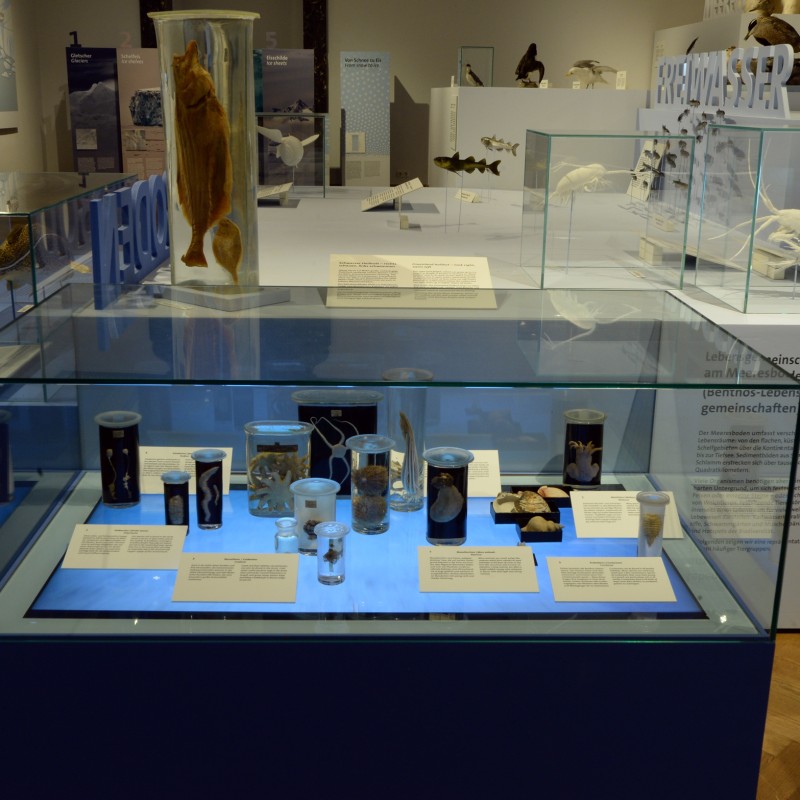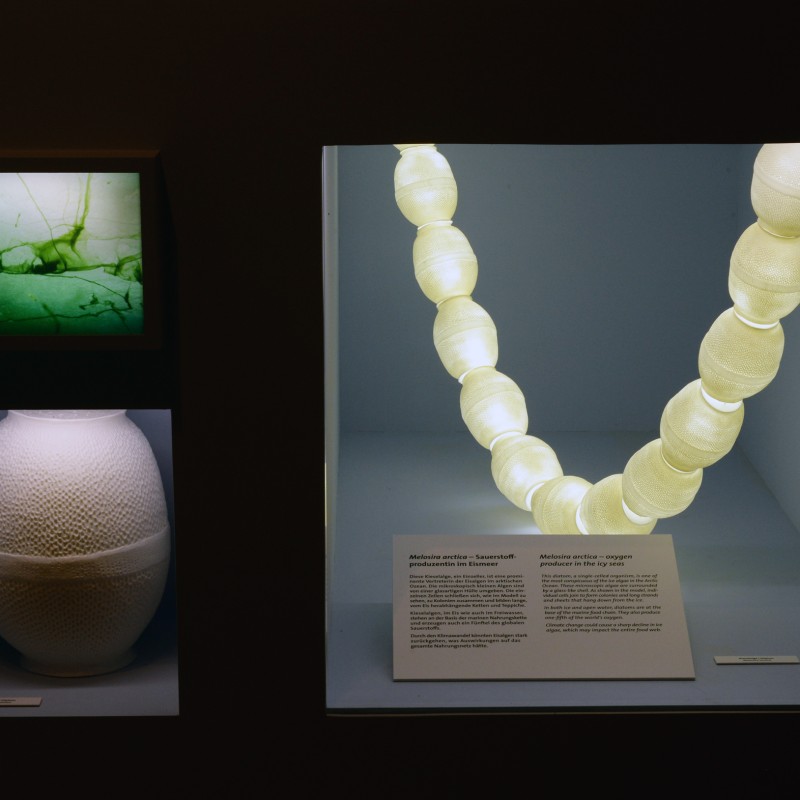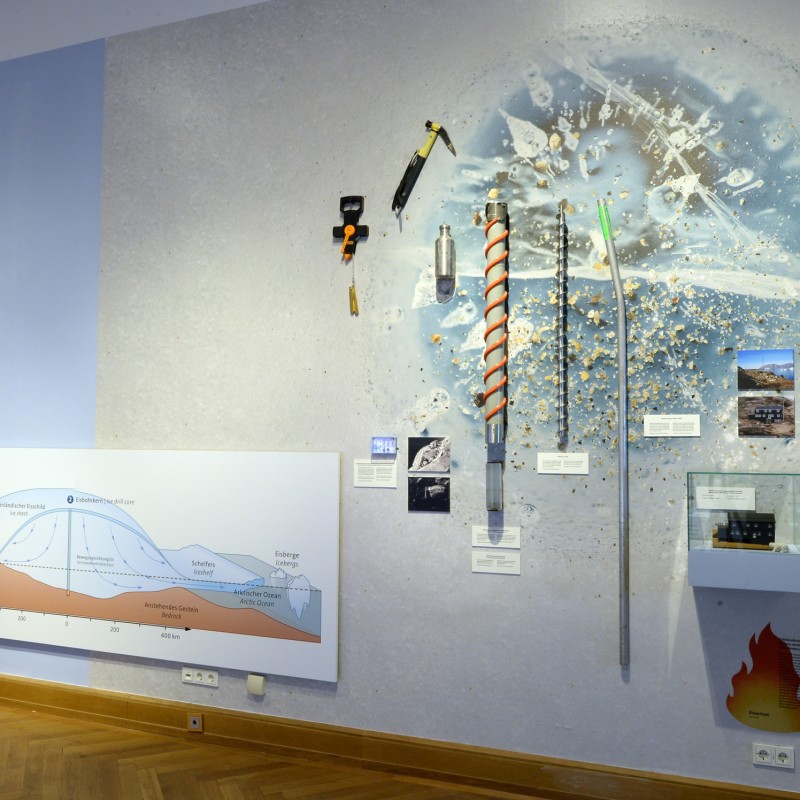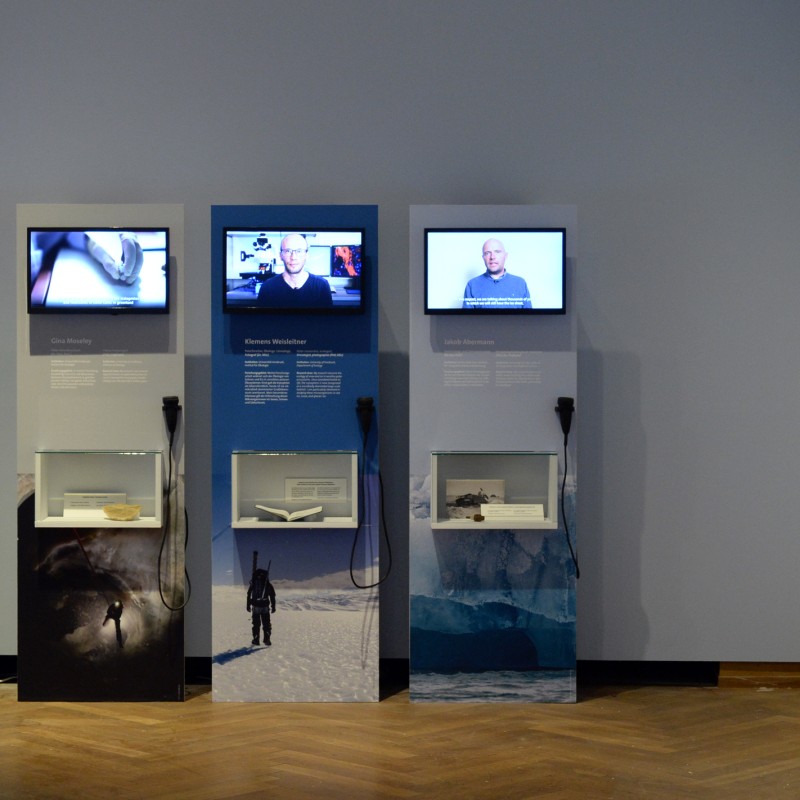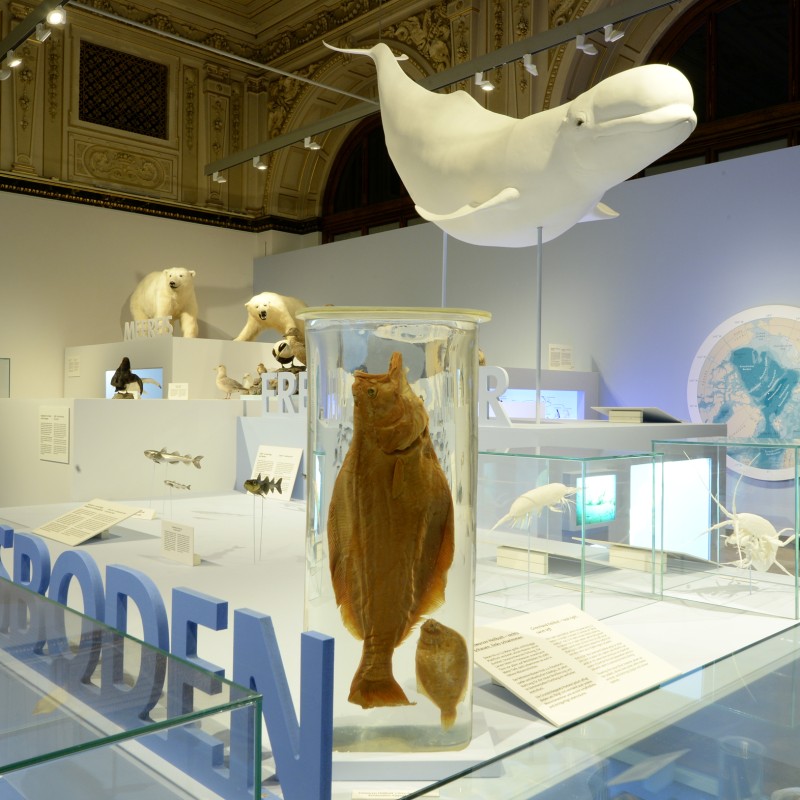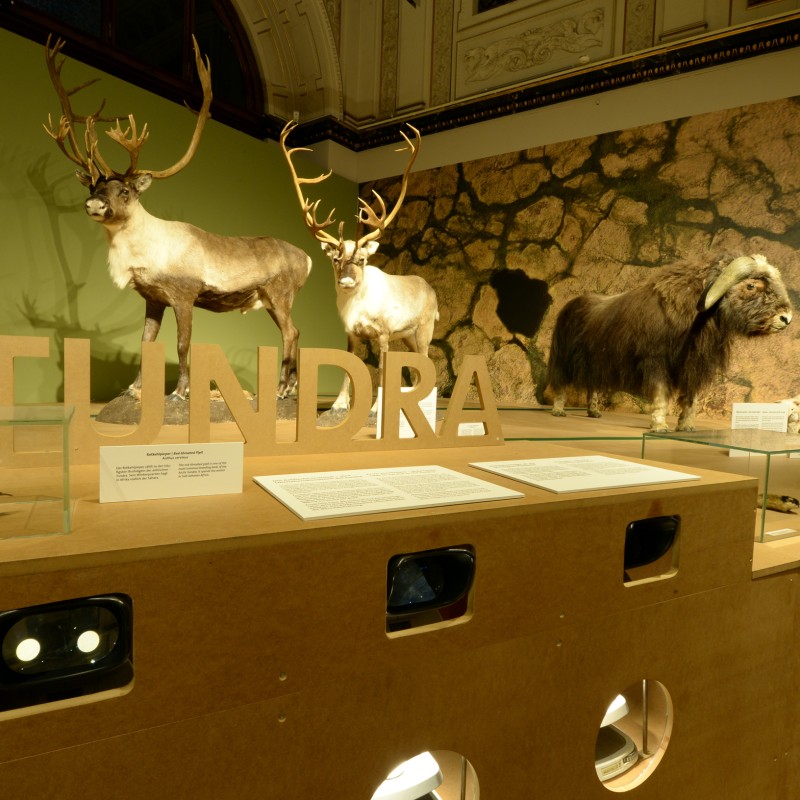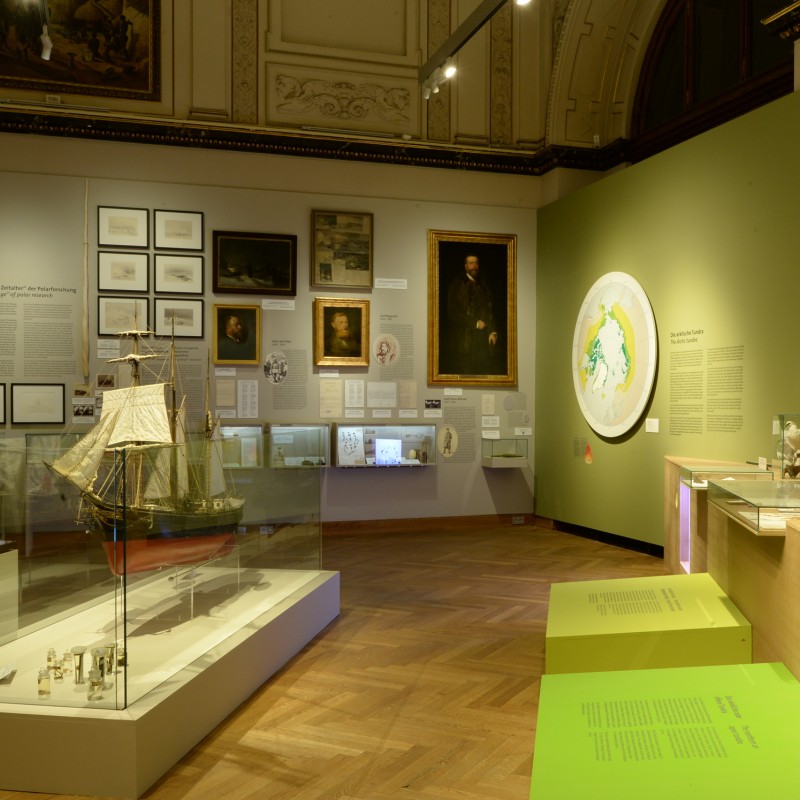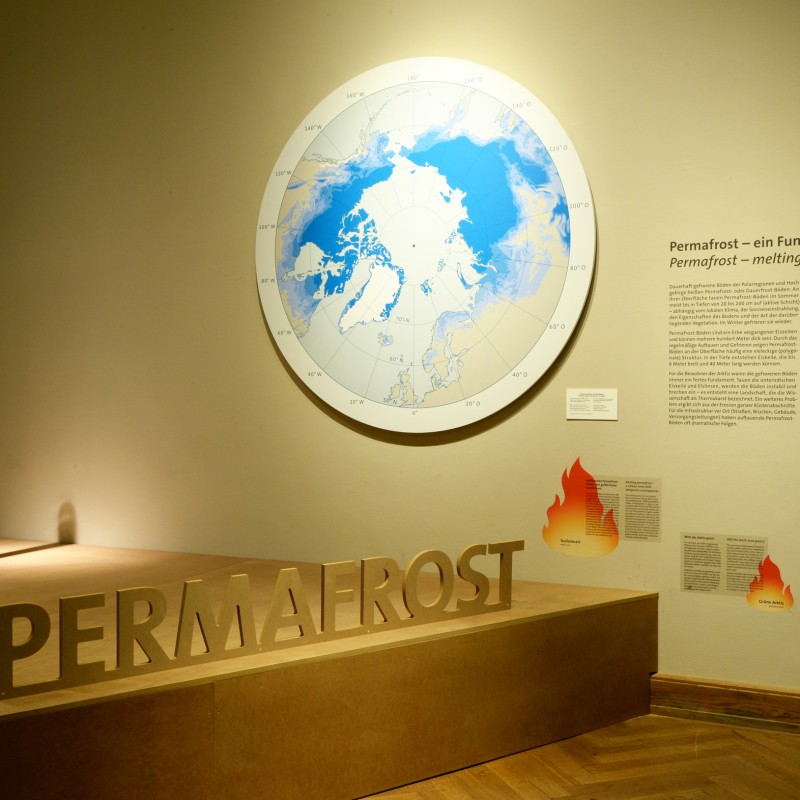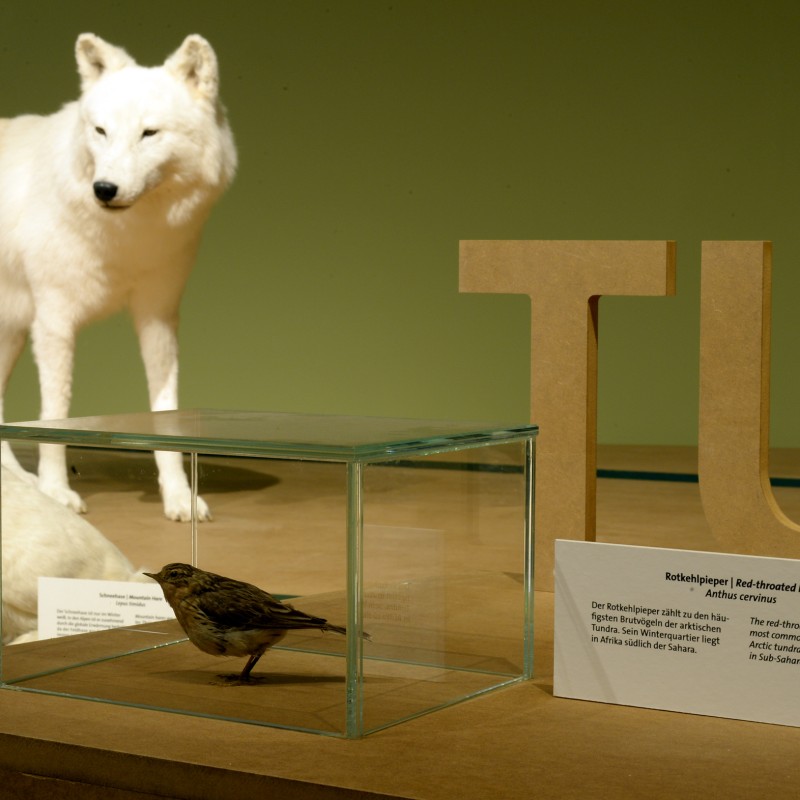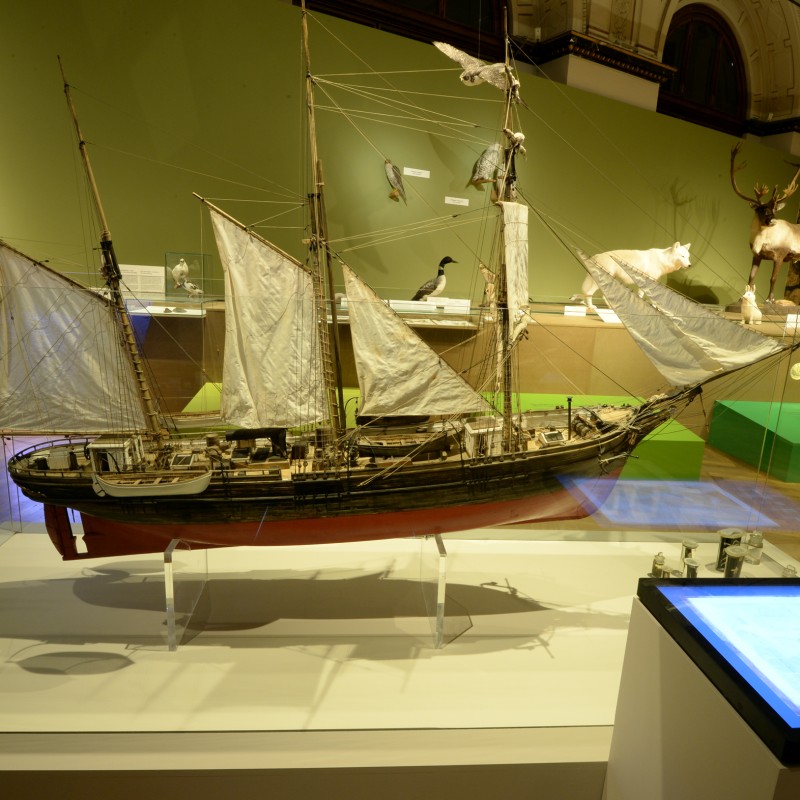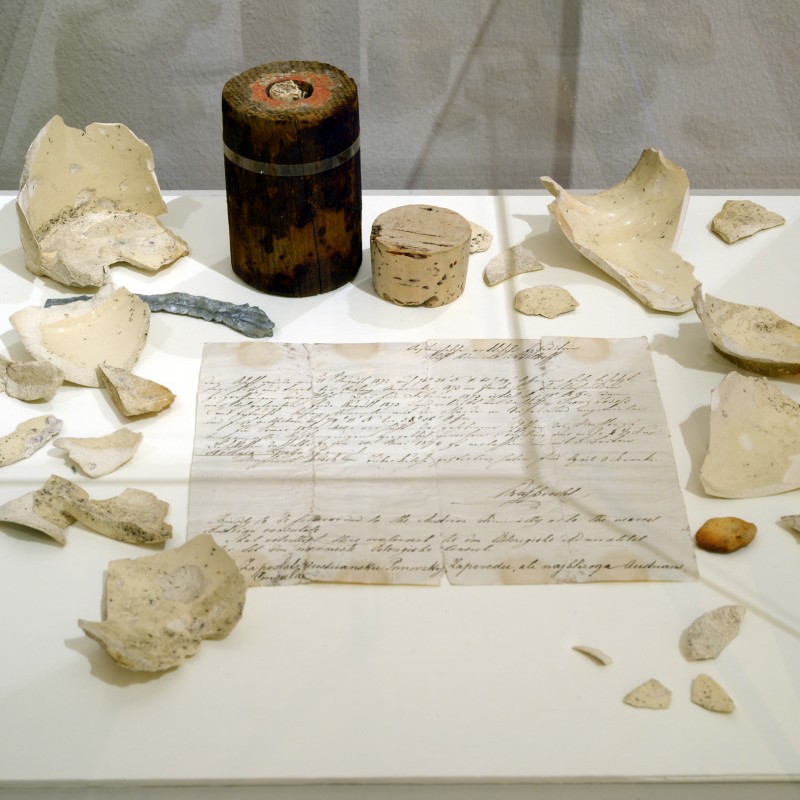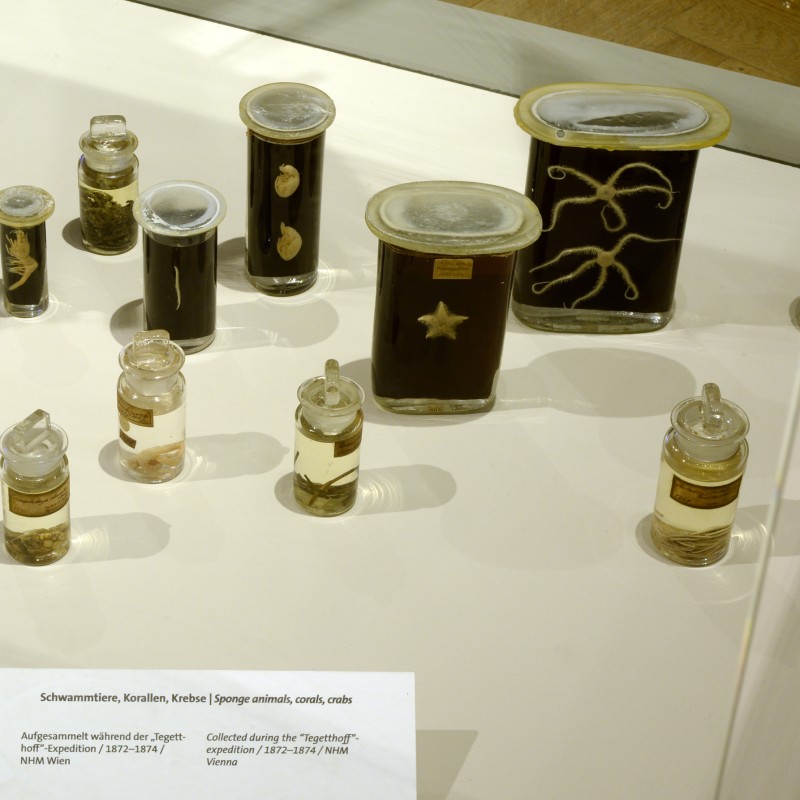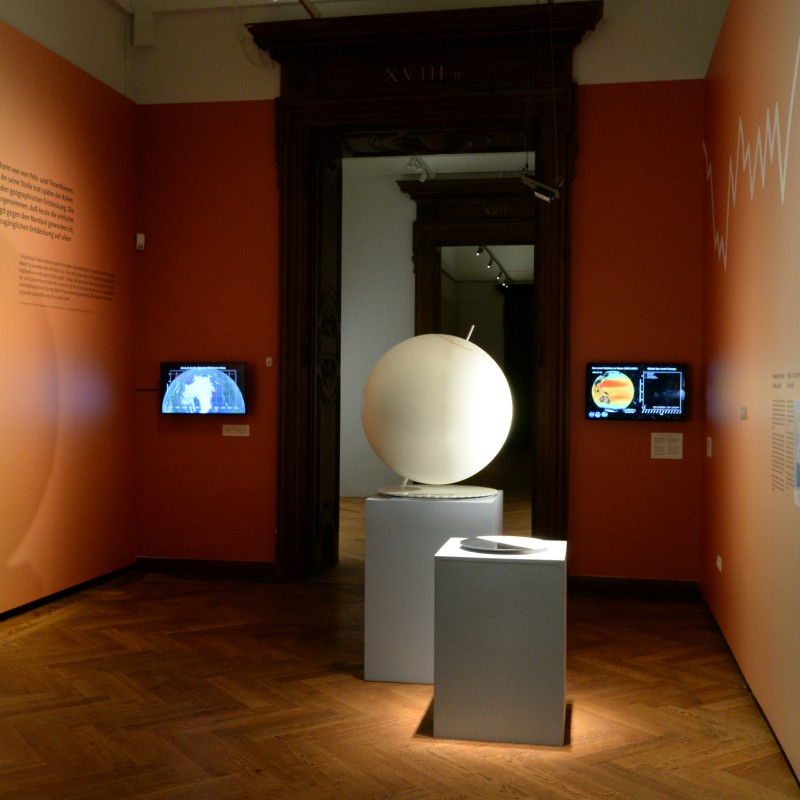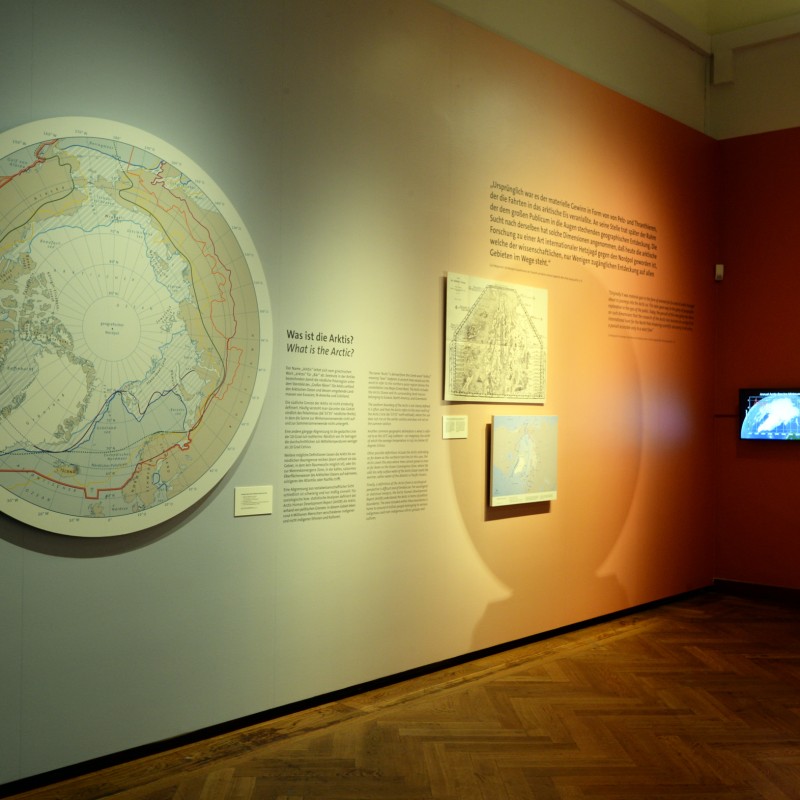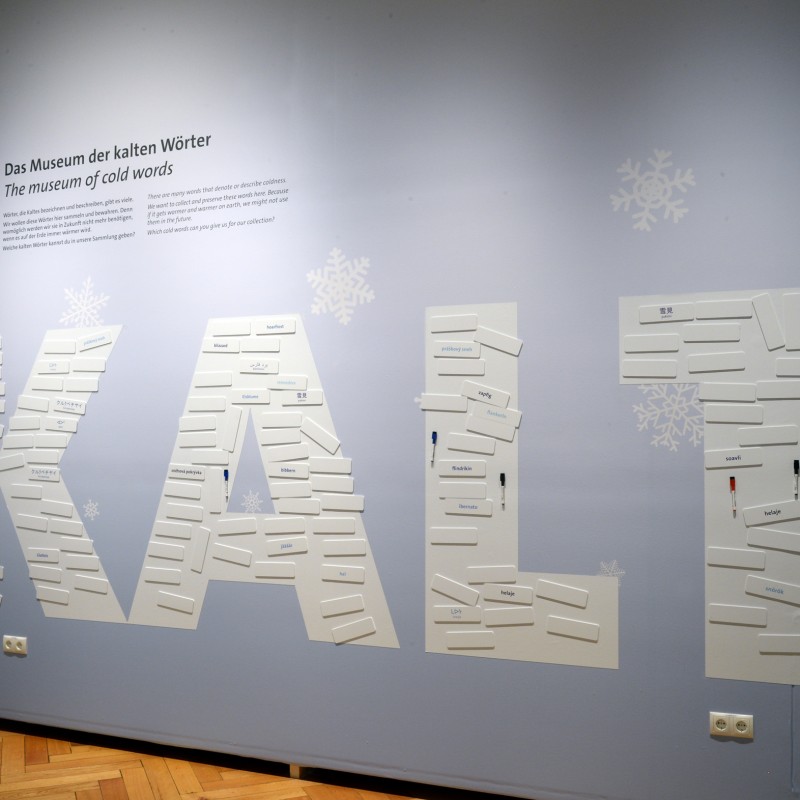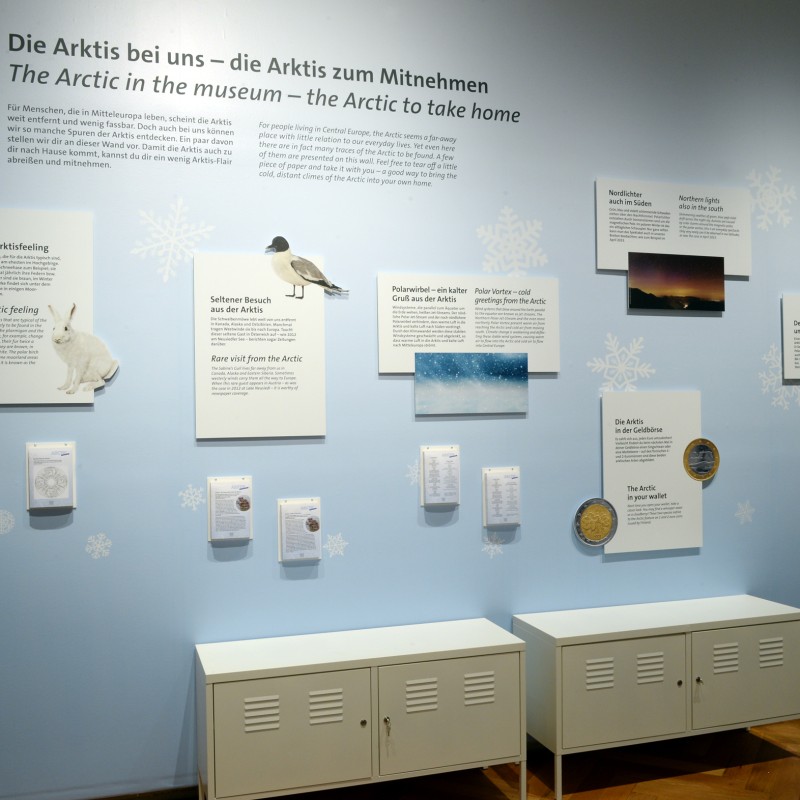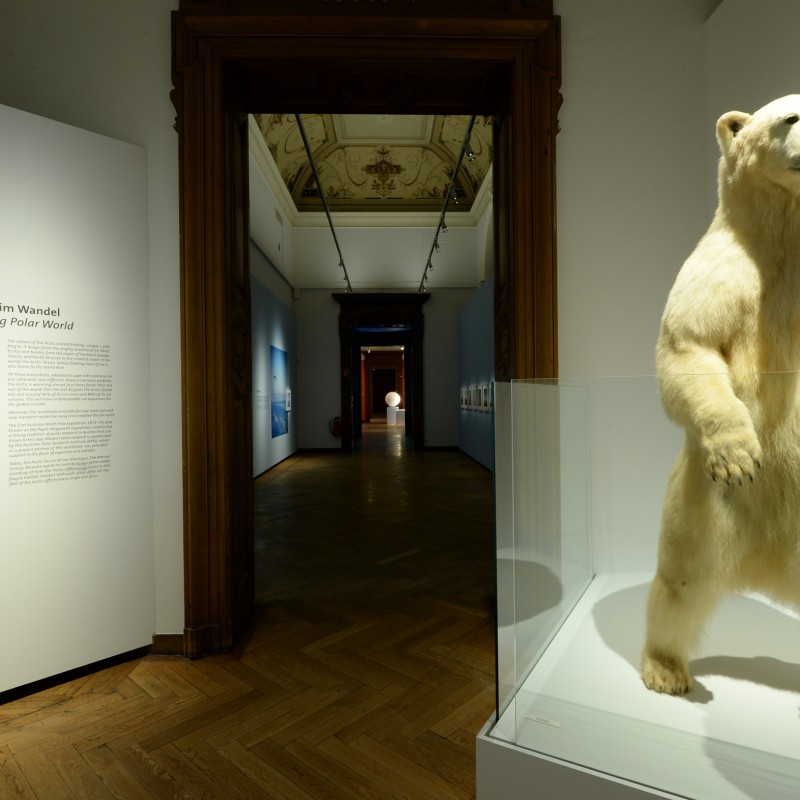“Arctic. The Changing Polar World”
07. November 2023
Special
exhibition rooms of the NHM Vienna since Tuesday, 7th November
Austria has a long tradition of polar research. It was 151 years ago that the members of the “Austro-Hungarian North Pole
Expedition” set out on the Admiral Tegetthoff with the aim of exploring the Arctic Ocean and finding the Northeast
Passage. The ship soon got locked in pack ice, however. As it drifted with the ice, the polar explorers Carl Weyprecht and
Julius Payer discovered a group of islands, which they named after the emperor: Franz-Josef-Land. A few zoological objects
they brought back from this expedition are still preserved at the NHM Vienna today. Based on his experiences from the expedition,
Carl Weyprecht developed key theories for modern Arctic research. His work also provided the basis for the “First International
Polar Year” held in 1882-1883. Austria took part with its own research station on Jan Mayen Island.
Today, the Austrian Polar Research Institute (APRI) coordinates domestic research and international cooperation in the field of polar science. The first permanent Austrian polar research station was recently established in East Greenland In cooperation with the University of Graz. The APRI being a project partner of the NHM Vienna, its researchers have been closely involved in the exhibition, which gives them a platform to report on their main areas of research.
This exhibition highlights the unique nature of the Arctic, its fascination and fragility, as well as the rapid changes affecting the Arctic regions. Climate change with its clearly visible and measurable effects, as well as geopolitical shifts, have drawn global attention to the Arctic.
Exploring the many facets and roles of this unique ecosystem from different perspectives, the exhibition demonstrates that the Arctic plays a crucial global role and is now more closely linked to human existence than ever before.
I. Department of Zoology, NHM Vienna
Followed by a tour of the new exhibition in the two special exhibition rooms and 6 cabinets
Inclusion in the museum on the themes of the new special exhibition
Guided tours by people with and without disabilities for people with and without disabilities Clara Porak, Managing Director of andererseits, Magazin für Behinderung und Gesellschaft and Agnes Mair, member of the Science Communication Department, NHM Vienna
A brochure on the exhibition (EUR 6.90) and an exhibition poster (EUR 3) are available for sale at the museum shop.
The comprehensive accompanying programme, including lectures, guided tours and formats for families can be found in a flyer for the exhibition or on the NHM website at https://www.nhm-wien.ac.at/veranstaltungsprogramm
Today, the Austrian Polar Research Institute (APRI) coordinates domestic research and international cooperation in the field of polar science. The first permanent Austrian polar research station was recently established in East Greenland In cooperation with the University of Graz. The APRI being a project partner of the NHM Vienna, its researchers have been closely involved in the exhibition, which gives them a platform to report on their main areas of research.
This exhibition highlights the unique nature of the Arctic, its fascination and fragility, as well as the rapid changes affecting the Arctic regions. Climate change with its clearly visible and measurable effects, as well as geopolitical shifts, have drawn global attention to the Arctic.
Exploring the many facets and roles of this unique ecosystem from different perspectives, the exhibition demonstrates that the Arctic plays a crucial global role and is now more closely linked to human existence than ever before.
Programme
Welcome and introduction:
Dr Katrin Vohland, Director
General/CEO, NHM Vienna
Why is Austria conducting research in the Arctic?
Prof Dr Wolfgang
Schöner, Director of the Austrian Polar Research Institute (APRI)
Department of Geography and Regional Sciences,
University of GrazAustria and historical Arctic research
DDr Martin Krenn, Curator
of the exhibition and Head of Department of the Archive for the History of Science, NHM Vienna
The fascination of the Arctic Ocean
Dr Bettina Riedel , Curator of the exhibition and research associate of the fish collection,I. Department of Zoology, NHM Vienna
The making of an exhibition
Dr Andreas Hantschk, Curator of the exhibition and member of the Science Communication Department, NHM ViennaFollowed by a tour of the new exhibition in the two special exhibition rooms and 6 cabinets
Inclusion in the museum on the themes of the new special exhibition
Guided tours by people with and without disabilities for people with and without disabilities Clara Porak, Managing Director of andererseits, Magazin für Behinderung und Gesellschaft and Agnes Mair, member of the Science Communication Department, NHM Vienna
Press kit:
https://www.nhm-wien.ac.at/presse/pressemitteilungen2023/arktisA brochure on the exhibition (EUR 6.90) and an exhibition poster (EUR 3) are available for sale at the museum shop.
The comprehensive accompanying programme, including lectures, guided tours and formats for families can be found in a flyer for the exhibition or on the NHM website at https://www.nhm-wien.ac.at/veranstaltungsprogramm
Saal 1: Kieselalgen als Basis des Nahrungsnetzes im arktischen Ozean,
3D-Druck-Modelle (natürliche Größe: 50 Mikrometer)
© NHM Wien, A. Schumacher
Saal 1: Arktis-Forscher*innen-Säulen: Martin Schwentner, Gina Moseley,
Klemens Weisleitner, Jakob Abermann
© NHM Wien, A. Schumacher
Saal 2: Geschichte der Österreichisch-Ungarischen Nordpolar-Expedition
(1872-1874)
© NHM Wien, A. Schumacher
Saal 2: Originalnachricht von Carl Weyprecht, geschrieben 1874 und 1978
auf Franz-Josef-Land gefunden. Heute im Besitz der Österreichischen Akademie der Wissenschaften
© NHM Wien, A. Schumacher
Saal 2: Originale Aufsammlung der Österreichisch-Ungarischen Nordpolar-Expedition
(1872-1874)
© NHM Wien, A. Schumacher
Kabinett 4: Was ist die Arktis? Hands on-Objekt zur Erklärung von Polarnacht
und Polartag.
© NHM Wien, A.
Schumacher

